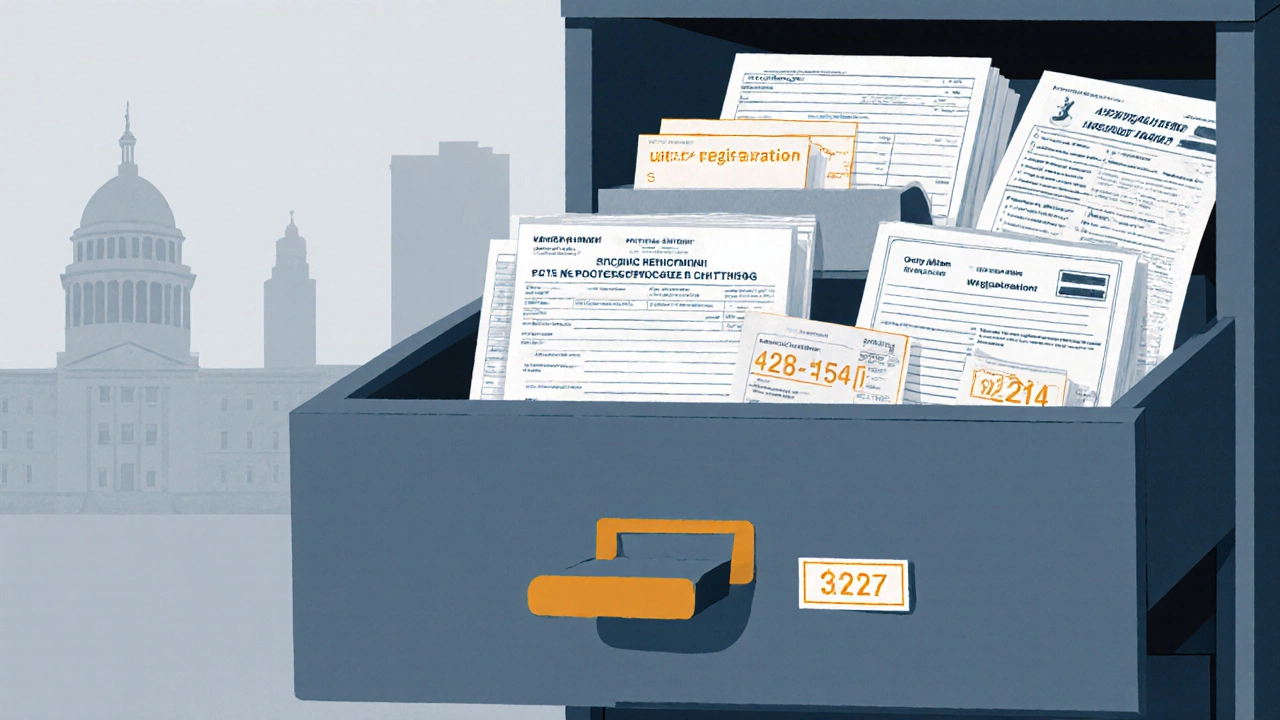Legal Residency Document Checklist
Document Verification Checklist
Follow this checklist to confirm your official legal residency date by verifying the required documents. Check each document as you find it.
Document Priority Guide
Most Reliable Documents
- Immigration Approval Notice Critical
- Green Card (with effective date) Critical
- Residence Registration Certificate Supporting
Important Notes
If you’re trying to figure out when you officially became a legal resident, you’re not alone. Whether you’re applying for a driver’s license, opening a bank account, or claiming benefits, knowing your exact residency start date matters. It’s not always obvious, especially if you moved without formal paperwork or didn’t keep track of documents. The date isn’t always the day you signed a lease or bought a house-it’s the day the government recognized you as a legal resident. Here’s how to find it.
Check Your Immigration Documents
The most reliable source for your legal residency date is your immigration paperwork. If you entered the country on a visa that led to permanent status, your residency start date is usually printed on your green card, permanent resident card, or resident permit. Look for a line labeled Resident Since or Effective Date. That’s your official date.
For example, if you received your green card in March 2022 after adjusting status from a work visa, your residency date is likely the day your application was approved-not the day you got the physical card in the mail. The approval notice from USCIS (Form I-797) often lists this date clearly. Keep a copy of that notice. Many people lose it and spend months trying to recover the date later.
Review Your Property Registration Records
If you bought or rented property, the date you registered your address with local authorities can help confirm residency. In many cities, you’re required to register your residence within 30 days of moving in. This is often called residence registration, anmeldung (in Germany), or domicile registration (in some U.S. counties).
Check with your city hall, municipal office, or local housing authority. Ask for a copy of your registration form or certificate. These documents usually include the date you declared the address as your primary residence. Even if you didn’t file it yourself, your landlord or property manager might have done it on your behalf. Request the record using your full name and the address you lived at.
Look at Your Tax Records
Your tax filings are a strong indicator of when you claimed legal residency. When you file your first state or local tax return as a resident, you’re declaring that you lived there for the full tax year. The date you started filing as a resident is often the same date you became eligible for in-state tuition, voting rights, or public benefits.
Check your past tax returns. Look at Form 1040 or your state’s equivalent. If you filed as a part-year resident in 2021 and a full-year resident in 2022, your residency likely started in early 2022. Some states even ask for the exact date you moved in. If you’re unsure, contact your state’s department of revenue and ask for a copy of your residency filing history.

Check Your Voter Registration
Voter registration is one of the most commonly overlooked sources of residency proof. In most places, you must be a legal resident to register to vote. When you signed up, you had to provide proof of address-like a utility bill or lease-and you likely stated the date you moved there.
Visit your county elections office website or go in person. Request your voter registration record. It will show your registration date and the address you used. That date often aligns closely with your legal residency date. Even if you registered years ago, the record is kept indefinitely and can be retrieved with your name and date of birth.
Review Utility Bills and Bank Statements
While these don’t prove legal status, they support your claim. Start gathering documents from the earliest time you lived at your current address. Look for the first utility bill (electricity, water, gas) in your name, or the first bank statement showing your address.
Many government agencies accept a combination of these as secondary proof. If your green card says you became a resident in 2020, but your first utility bill is from August 2020, that confirms your move happened around then. Keep at least three months of statements from that period. Some agencies require them for appeals or corrections.
Contact the Government Agency That Issued Your Status
If you’re still unsure, go straight to the source. If you got your residency through marriage, employment, or asylum, the agency that processed your application holds the official record. In the U.S., that’s USCIS. In Canada, it’s IRCC. In the UK, it’s the Home Office.
Submit a formal request for your immigration file. In the U.S., you can file a FOIA (Freedom of Information Act) request online. It’s free and usually takes 2-6 weeks. The file will include every form you submitted, all approval dates, and the exact date your residency was granted. This is the gold standard for proof.

What If There’s a Discrepancy?
It’s not rare to find conflicting dates. Maybe your green card says January 2021, but your voter registration says March 2021. Or your tax return says you became a resident in 2020, but your lease started in 2021.
In these cases, the immigration record (green card, visa stamp, approval notice) takes priority. It’s the only document that legally defines your status. Other records like voter registration or property deeds show where you lived, not when you were granted legal residency.
If the discrepancy affects your benefits-like Medicaid eligibility or in-state tuition-you can request a correction. Submit a letter to the issuing agency with supporting documents. Include your immigration approval notice, proof of address, and a short explanation. Most agencies will update the record if you provide clear evidence.
Keep a Residency File
Once you’ve found your official date, don’t just remember it-document it. Create a simple folder (digital or physical) with:
- Copy of your green card or resident permit
- USCIS or immigration approval notice
- Residence registration certificate
- First tax return as a resident
- Voter registration confirmation
- First utility bill in your name
Label it clearly: Legal Residency Documentation - Effective [Date]. You’ll thank yourself later when you need to prove your status for a job, loan, or visa renewal.
What If You Never Received Official Papers?
If you’ve been living in the country for years but never got a green card or formal notice, you may not be a legal resident at all. This is a serious issue. Some people confuse long-term residency with legal status. Living here for 10 years doesn’t make you a legal resident if you never applied for it.
If you’re unsure, consult an immigration attorney. Don’t rely on landlord statements, work permits, or social security numbers. Only official immigration documents count. If you’re eligible to apply now, do it as soon as possible. The clock on your residency starts when you’re approved-not when you moved in.





